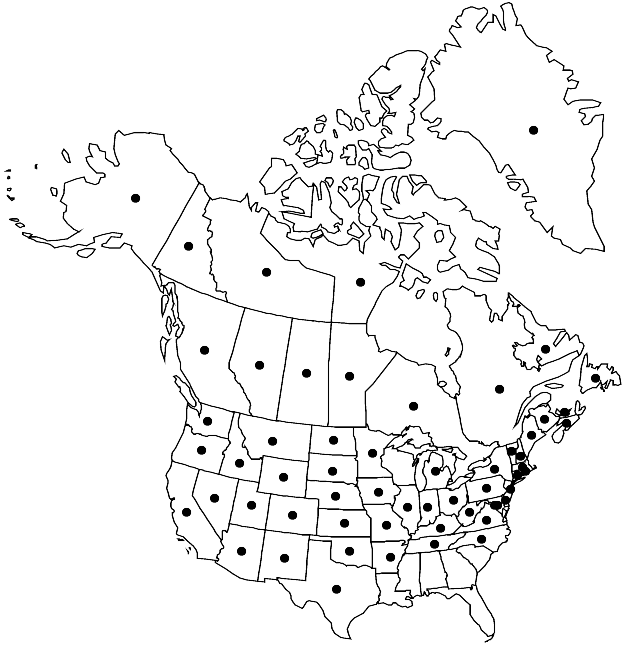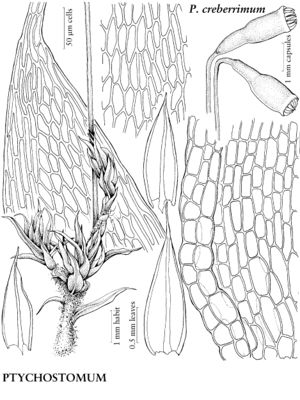Ptychostomum creberrimum
Phytologia 87: 23. 2005.
Plants in dense or open turfs, green or yellow-green. Stems 1–2(–3) cm, comose, innovations comose or somewhat elongate and evenly foliate; often strongly radiculose. Leaves green, twisted to contorted when dry, ovate-lanceolate, flat to weakly concave, (1–)2–3(–3.5) mm, somewhat enlarged toward stem apex; base weakly decurrent; margins revolute to mid leaf or beyond, limbidium strong, in 2 or 3 rows, yellowish; apex acuminate; costa long-excurrent, awn ± smooth; proximal laminal cells 3–4:1, same width or sometimes wider than more distal cells; medial and distal cells rhomboidal, 14–22 µm wide, 3–4:1, walls usually thin to firm, never oblique to costa. Specialized asexual reproduction absent. Sexual condition synoicous. Seta 1–2(–3) cm. Capsule brown, elongate-pyriform, symmetric, 2–4 mm, mouth yellow; operculum conic, apiculate; peristome well developed; exostome teeth yellow basally, hyaline distally, lamellae usually straight mid tooth, pores absent along mid line; endostome not adherent to exostome, basal membrane high, 1/2 exostome height, segments with broadly ovate perforations, cilia long, appendiculate. Spores 10–14(–16) µm, finely papillose, pale brown-yellow or green.
Phenology: Capsules mature May–Sep.
Habitat: Damp to dry soil, soil over rock
Elevation: low to high elevations (0-3500 m)
Distribution

Greenland, Alta., B.C., Man., N.B., Nfld. and Labr., N.W.T., N.S., Nunavut, Ont., P.E.I., Que., Sask., Yukon, Alaska, Ariz., Ark., Calif., Colo., Conn., Del., D.C., Idaho, Ill., Ind., Iowa, Kans., Ky., Maine, Md., Mass., Mich., Minn., Mo., Mont., Nebr., Nev., N.H., N.J., N.Mex., N.Y., N.C., N.Dak., Ohio, Okla., Oreg., Pa., R.I., S.Dak., Tenn., Tex., Utah, Vt., Va., Wash., W.Va., Wyo., s South America, Eurasia, Pacific Islands (New Zealand), Australia.
Discussion
Ptychostomum creberrimum is one of the most widespread and common species in the genus, occurring throughout the Northern Hemisphere and disjunct in the Southern Hemisphere. The species can be distinguished from the closely related P. lonchocaulon by its strictly synoicous sexual condition and narrower yellowish leaf border. It is similar also to P. pallescens, which is autoicous and has larger spores and elongate-ovate segment perforations.
Selected References
None.
